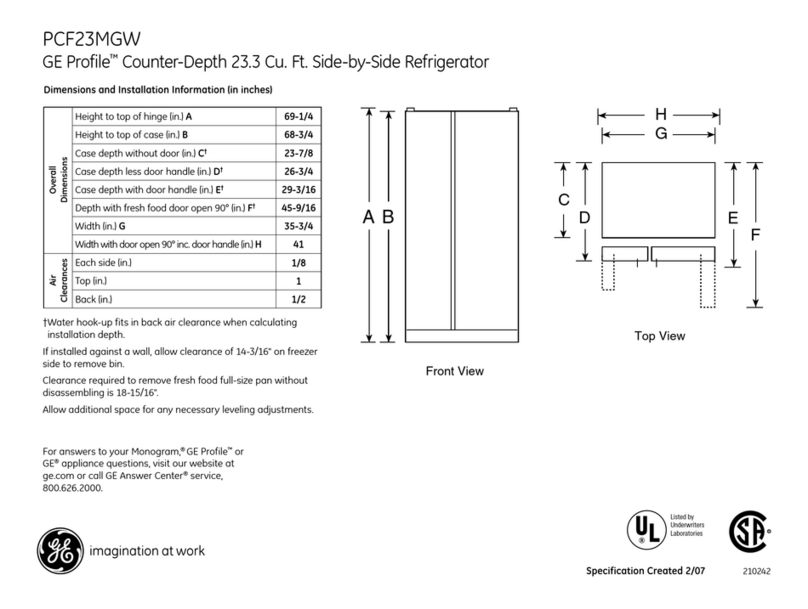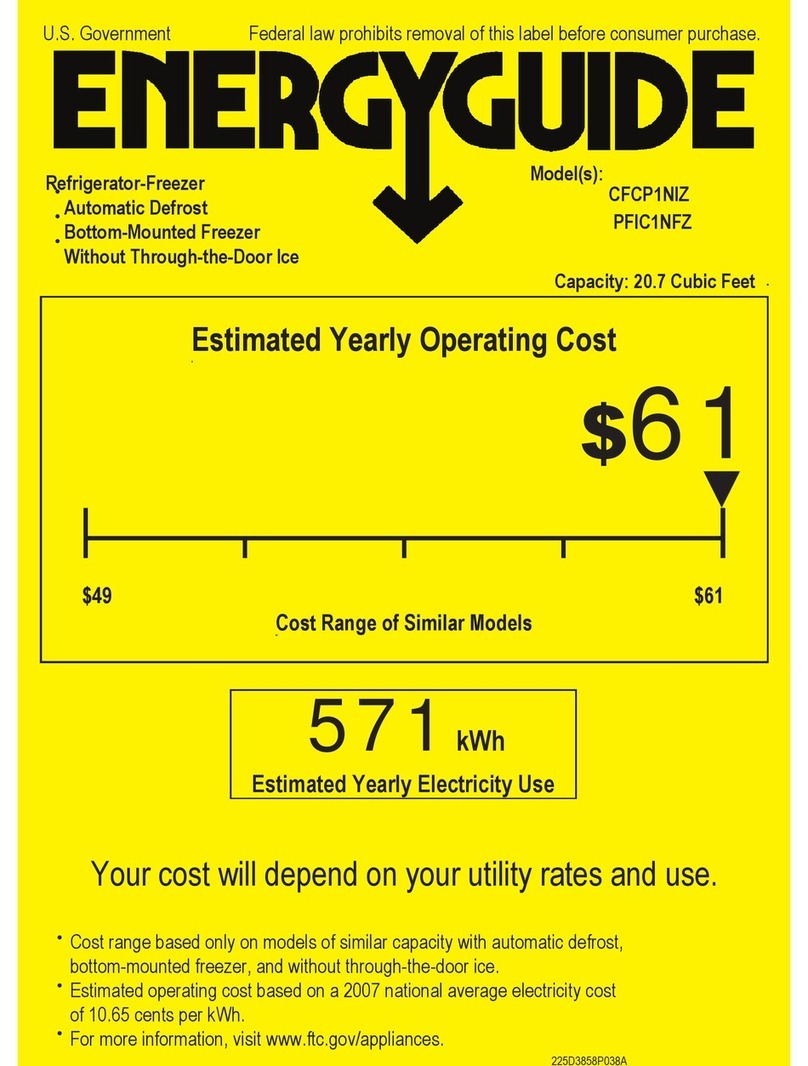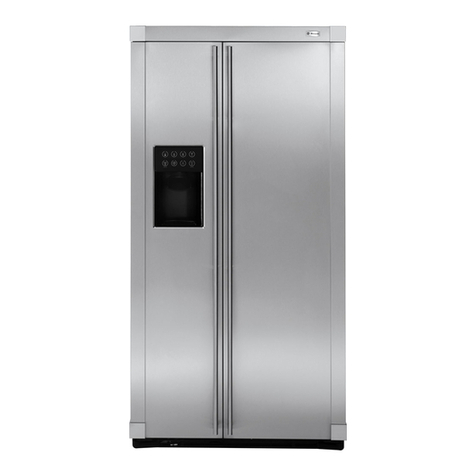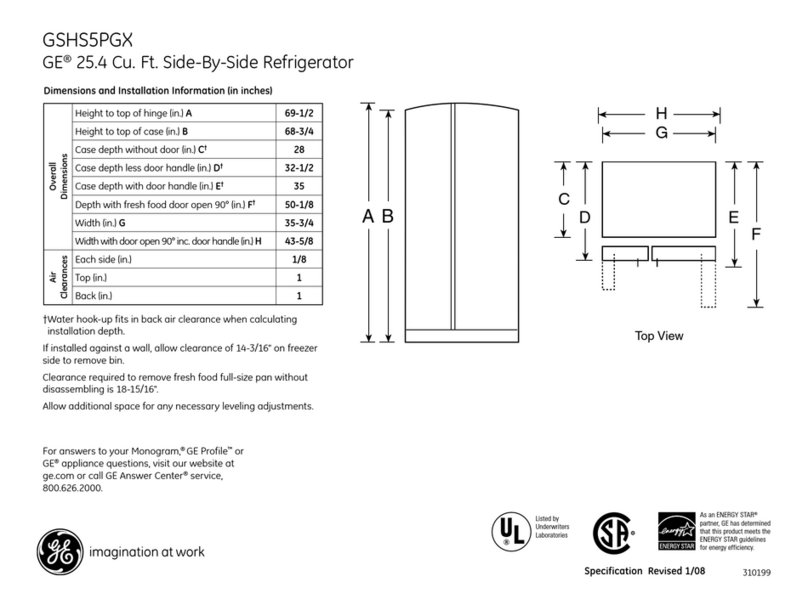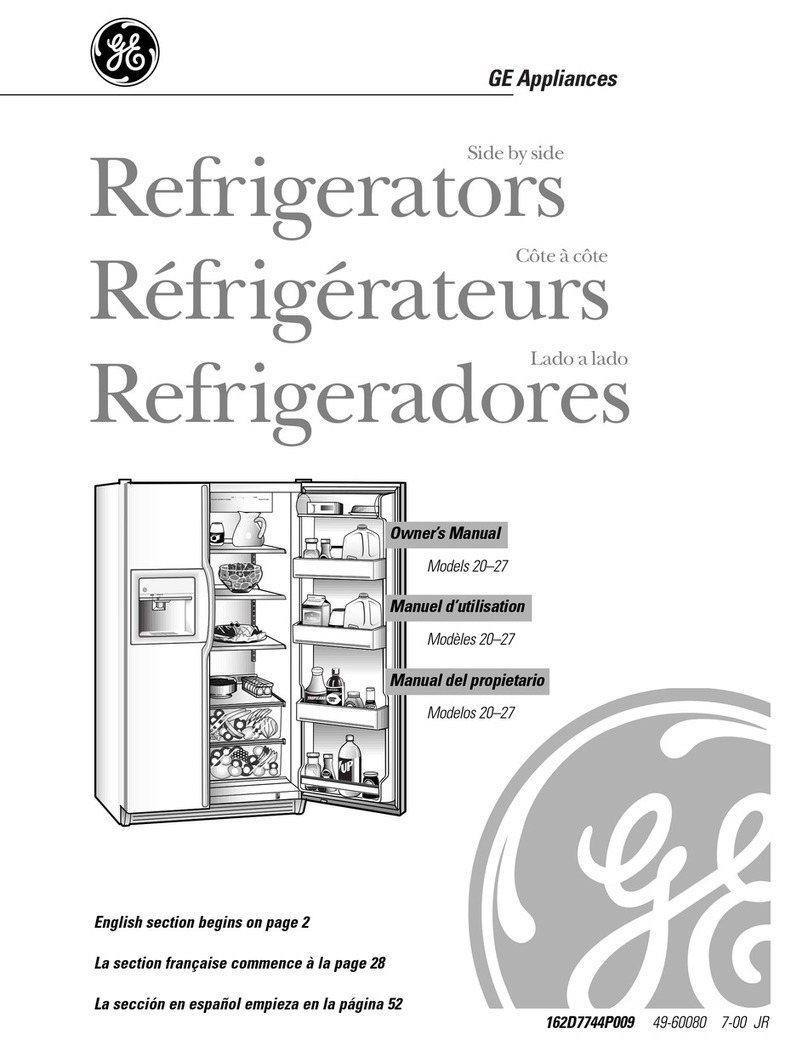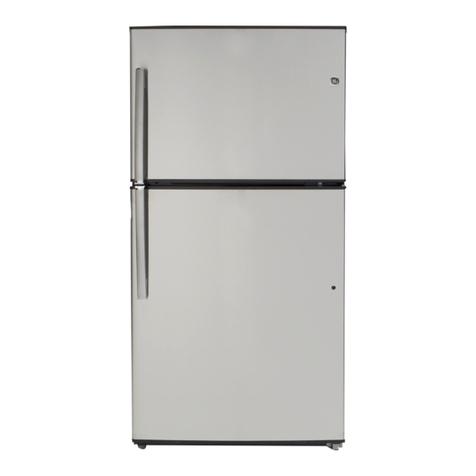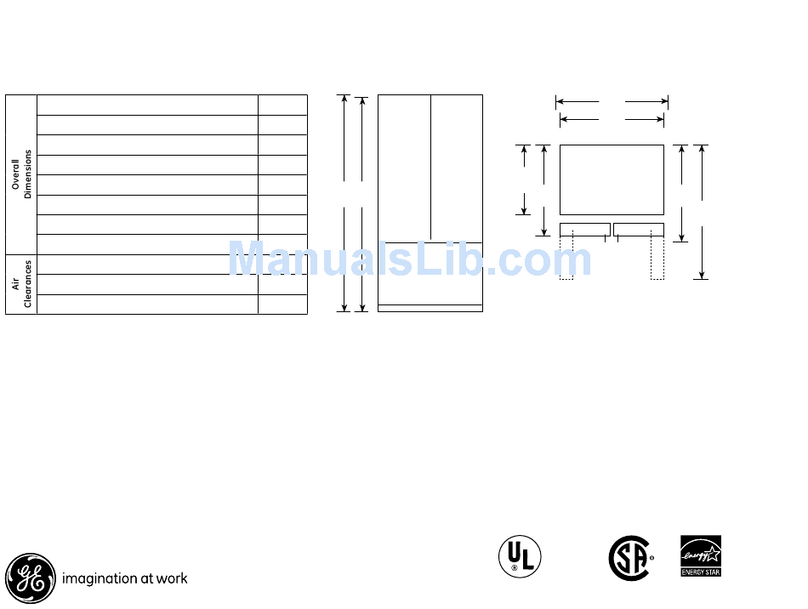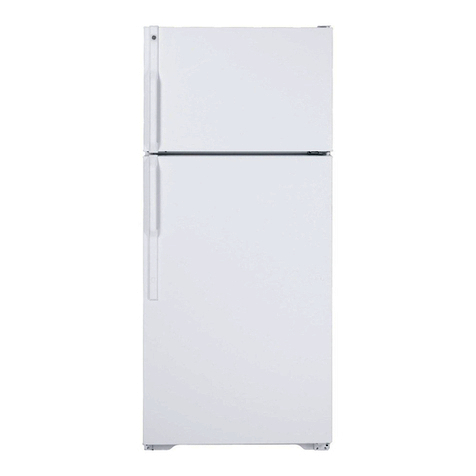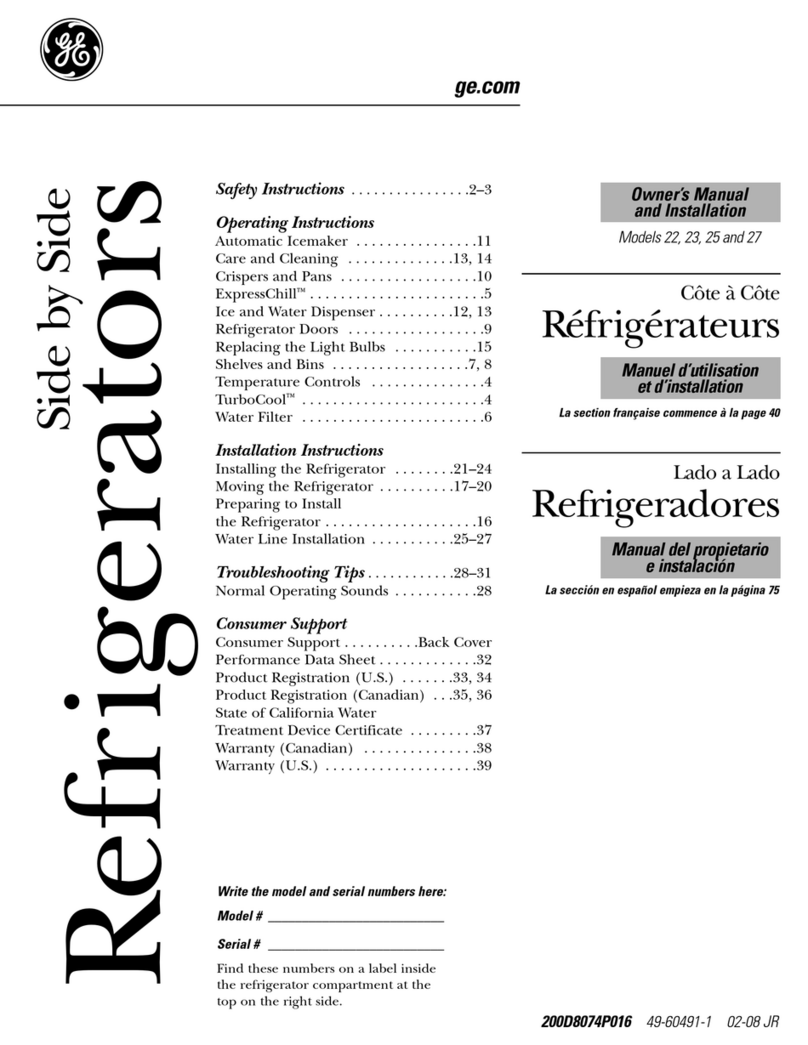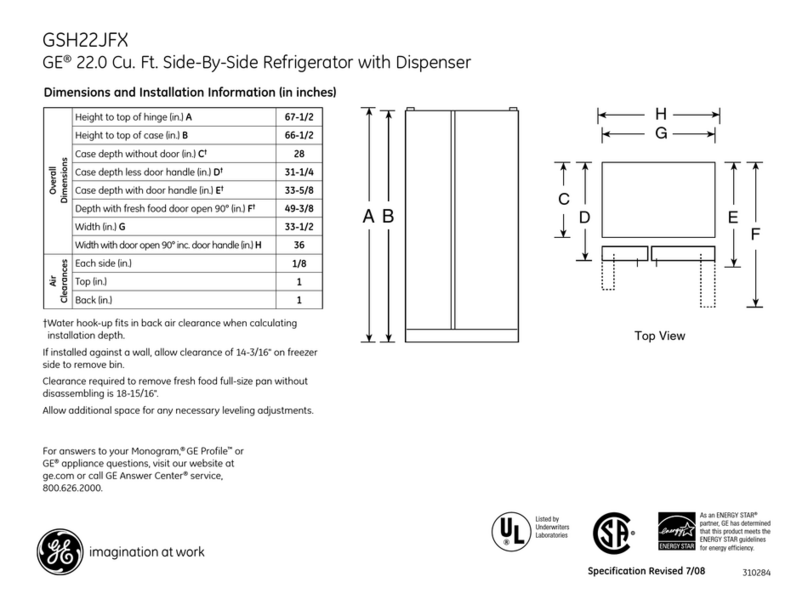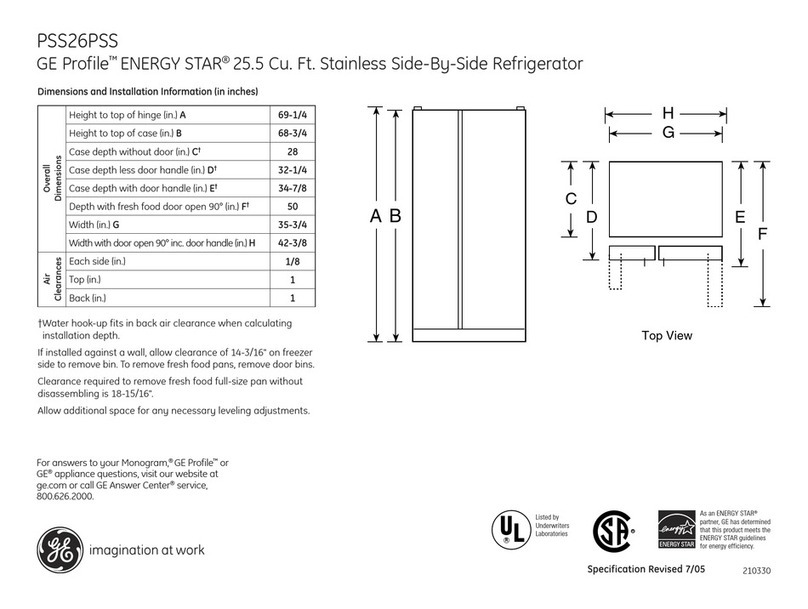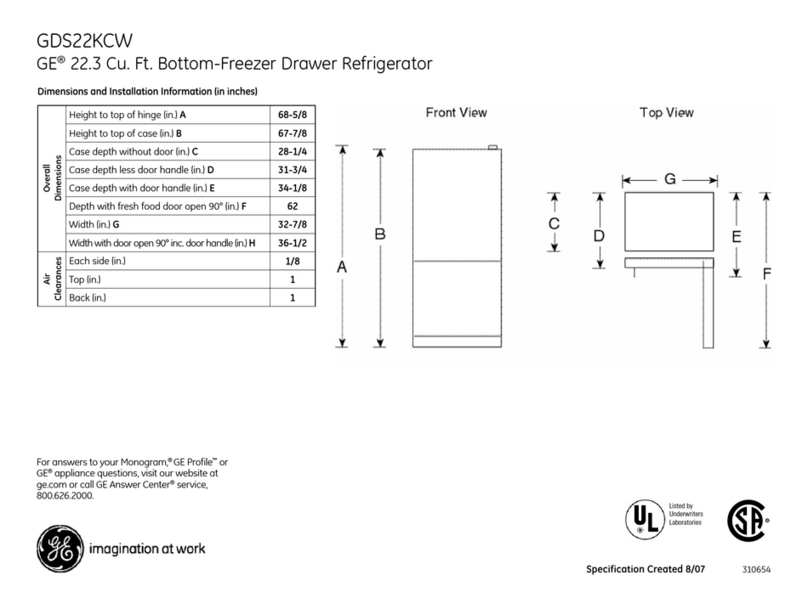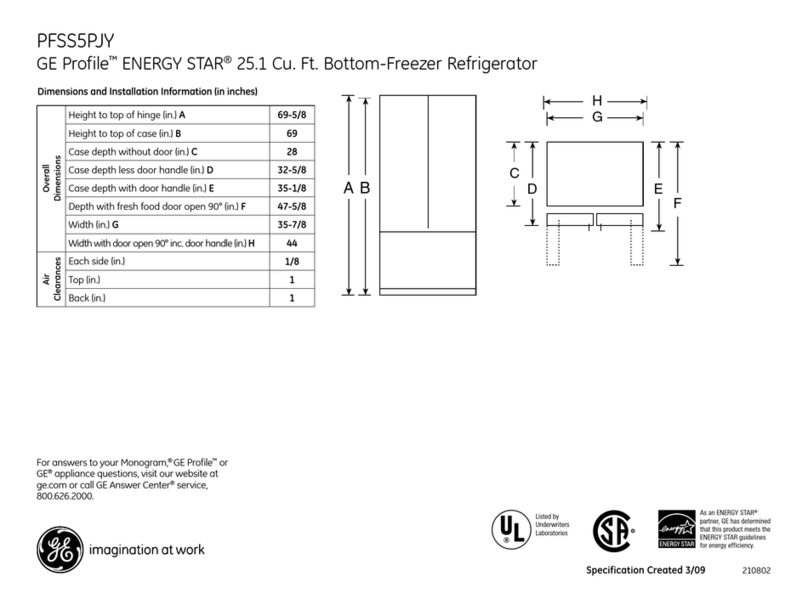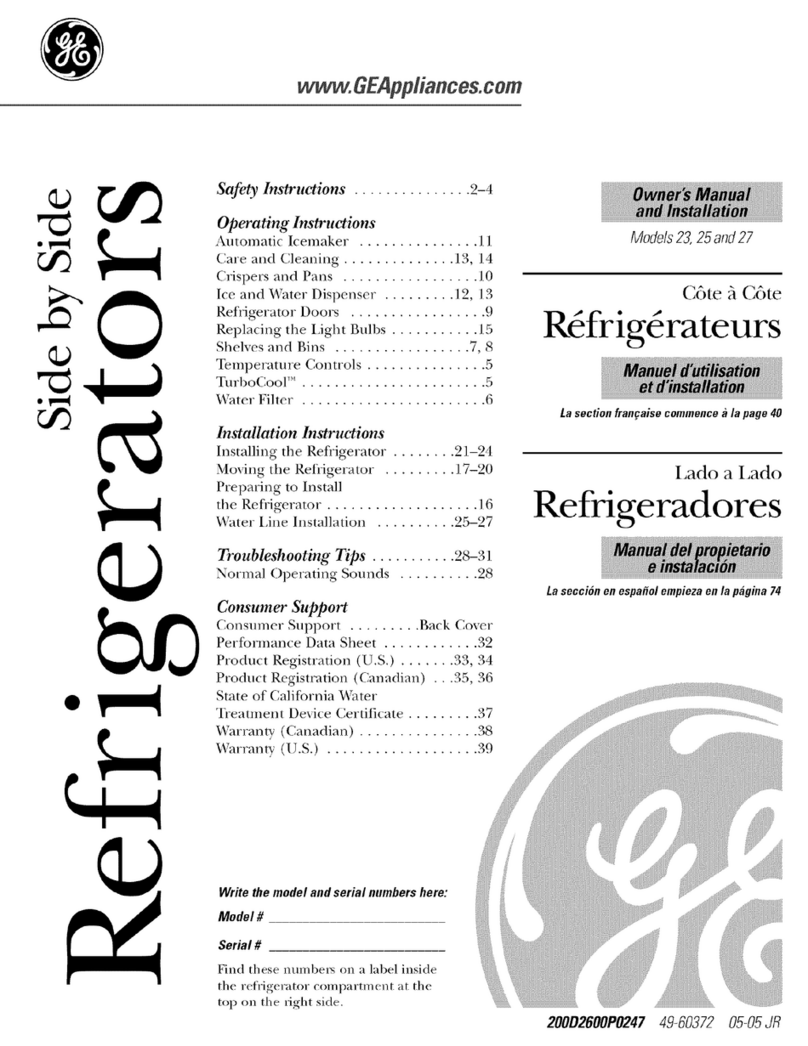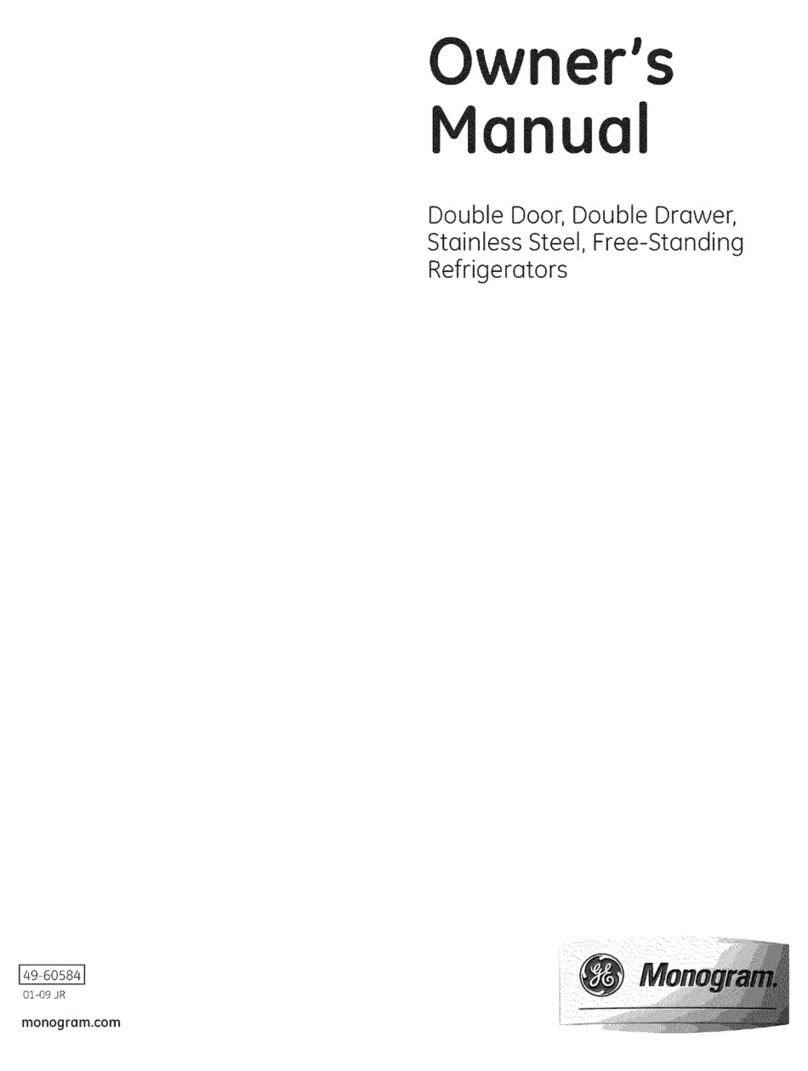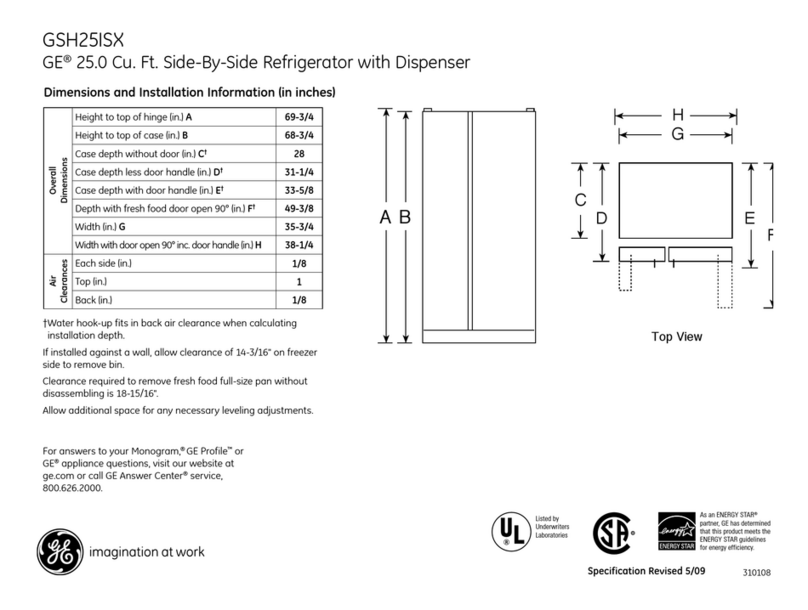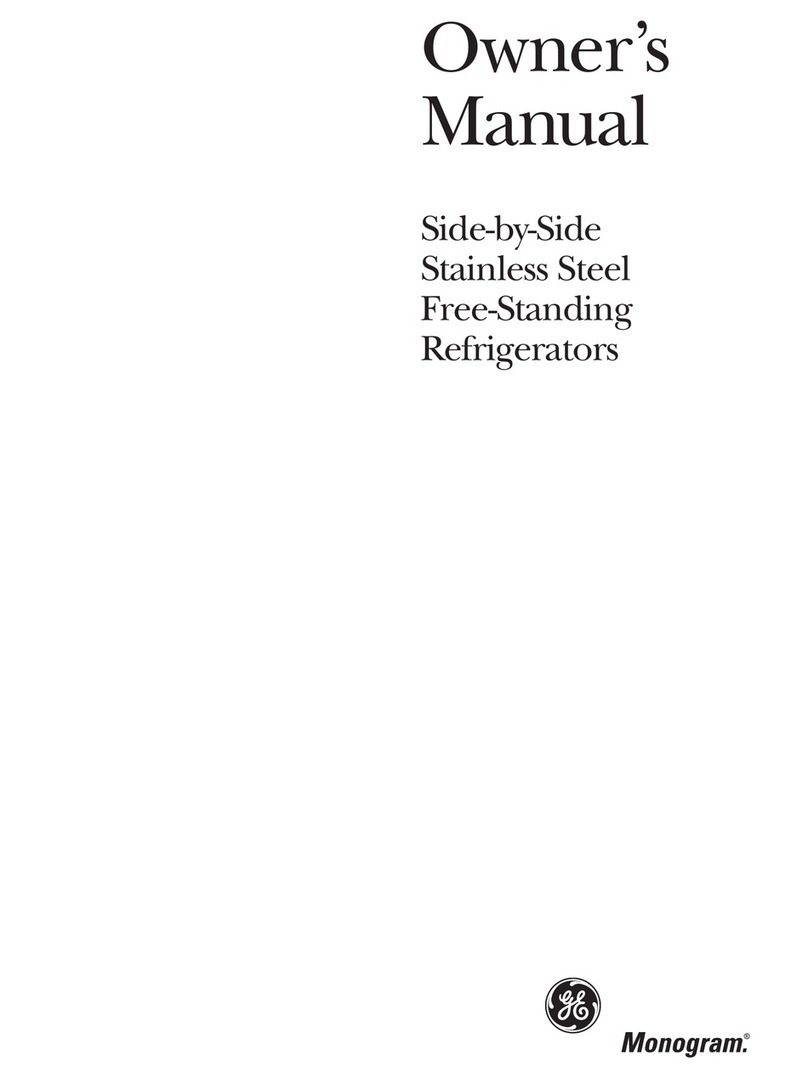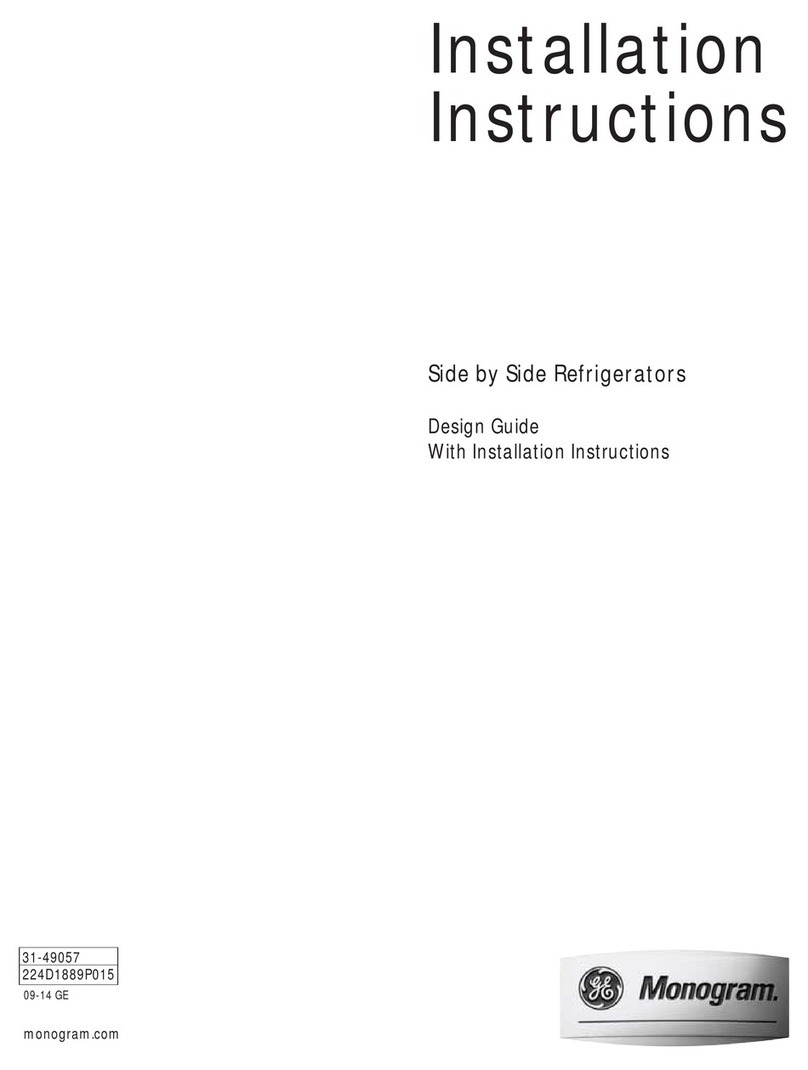lmponantsafety,Instructions ‘-–-
~.=
——.
-a.
~
Readal!instructionsbeforeusingthisappliance. _–
ew=
-1
=___
.
,. m.
-. –
W~~~~~~–When usingthis, ~
appliance, alwaysexercisebasic
safety precautions including the
following:
*Usethisapplianceonlyfor it~
intendedpurposeasdescribed in
this Useand Care Book.
~Thisrefrigeratormustbeproperly
installedinaccordancewiththe
InstallationInstructionsbeforeit
isused.See grounding instructions
below and on page 4.
@Never unplugyourrefrigerator
bypullingonthe powercord.
Always grip plug firmly and pull
straight out from the receptacle.
.Repairor replaceimmediately
allelectricservicecordsthat
havebecomefrayedor otherwise
damaged.Do not use acord that
showscracks or abrasion damage
along its length or at either the
e
plug or connector end.
oWhenmovingyourrefrigerator
awayfromthe wall, be careful
notto roll over or damagethe
powercord.
*Afteryour refrigeratorisin
operation,do nottouchthe cold
surfaces,particularlywhen hands
aredampor wet. Skin may adhere
to these extremely cold surfaces.
eOnceyouhaveremovedthe ice
cubestoiagetint~ner fromybur
refrigeratoi;do.,notplace ~ingersor
handsonthe aut~rna~icicemaking
‘mechanismwhiletherefrigeratoris
pluggedin.This will help protect’
you from possible injury. 1~will
also prevent interference with the
moving partof the ejector mechan-
ismor with the heating element.
that releasesthe cubes. ”
●Don’trefreezefrozenfoods
whichhavethawedcompletely.
The United States Department of “
Agriculture in Home and Garden
Bulletin No. 69 says:
‘~..Youmaysafely refreeze frozen
foods that havethawed if they still
contain ice crystals or if they are
still cold—below 40°F..
‘~..Thawedground meats,poultry,
or fish that haveany off-odor
or off-color should not be refrozen
and should not be eaten. Thawed
ice cream should be discarded. If
the odor or color of any food is
poor or questionable, get rid of it.
The food may be dangerous to eat.
“Even patiial thawing and refreez-
ing reduce the eating quality of
foods, particularly fruits, vege-
tables and prepared foods. The
eating quality of red meats is
affected lessthan that of many ~
other foods. Userefrozenfoodsas ~f;
soon aspossible,to saveas much =-’
of their eating quality asyou can.” s,
-—
.If youroldrefrigeratorisstill E
aroundthe housebutnot‘inuse, ~- .
besureto removethe doors=This —
~-
-1
wiii reducethe ,~ossibilityof danger m“ -
to chiidren. --
~J
——.
~- r
*, Unplugyourrefrigerator:
A. Before making any repairs.
Note: Westrongiy recommend
that any servicing be performed —-
by aquaiified individual. -
-
B. Before cieaning. ~
~
m.
C. Before repiacing aburned-out -~
iight buib, the refrigerator shouid ==
be unpiugged in order to avoid ~–
---
contact with aiive wire fiiament. -
m
(A burned-out iight buib may ~
-
break when being repiaced.) =Fp
Note: Turning controi to OFF --,
-
position does not remove power ~
w. .
to the iight circuit. ~.
E
*Donotoperateyourrefrigerator -
inthe pr~ence ofexpiosivefumes. -
~-
E#
w-r
~.
SAVETHESE ~
—.-..—
.———..
=
-
w.
INSTRUCTIONS
r---
-—--
insta~iationRequirements–IMPORTANT. ..Please ReadCarefully
How toconnect
electricity
For perSOnal saf~ty,
il~is a~~lianc~ must be
properly grounded.
The power cord of this appliance
is equipped with athree-prong
(grounding) plug which mates with
—. Qstandard three-prong (grounding)
‘!! receptacle (Fig, 1)to minimize
,-----
-tho possibility of electric shock
l]:]zflr~jfrom this appliance
PREFERRED
METHOD
Fig. 1
Have the wall receptacle and
circuit checked by aqualified
electrician to make sure the
receptacle is properly grounded.
m
~.
Where astandard two-prong waii &-. ....
receptacle isencountered, it isthe -—
XW---.
personai responsibility and obli- %TL--
-==—_–
gation of the customer to have it ~
-.-< --
til
repiaced with aproperiy grounded w=—--
kT*::I
three-prong waii receptacle. m’
.. .W..
%=z—
DO NOT, UNDER ANY CIRCUM- m---
=. *%;.
*< ~
STANCES,CUTORREMOVE R:m:
hr.
THE THIRD (GROUND) PRONG E%:r–:.
SW.–-
FROM THE POWERCORD. ~+=~_–_
&:4_—_4.
~~: -~
3
